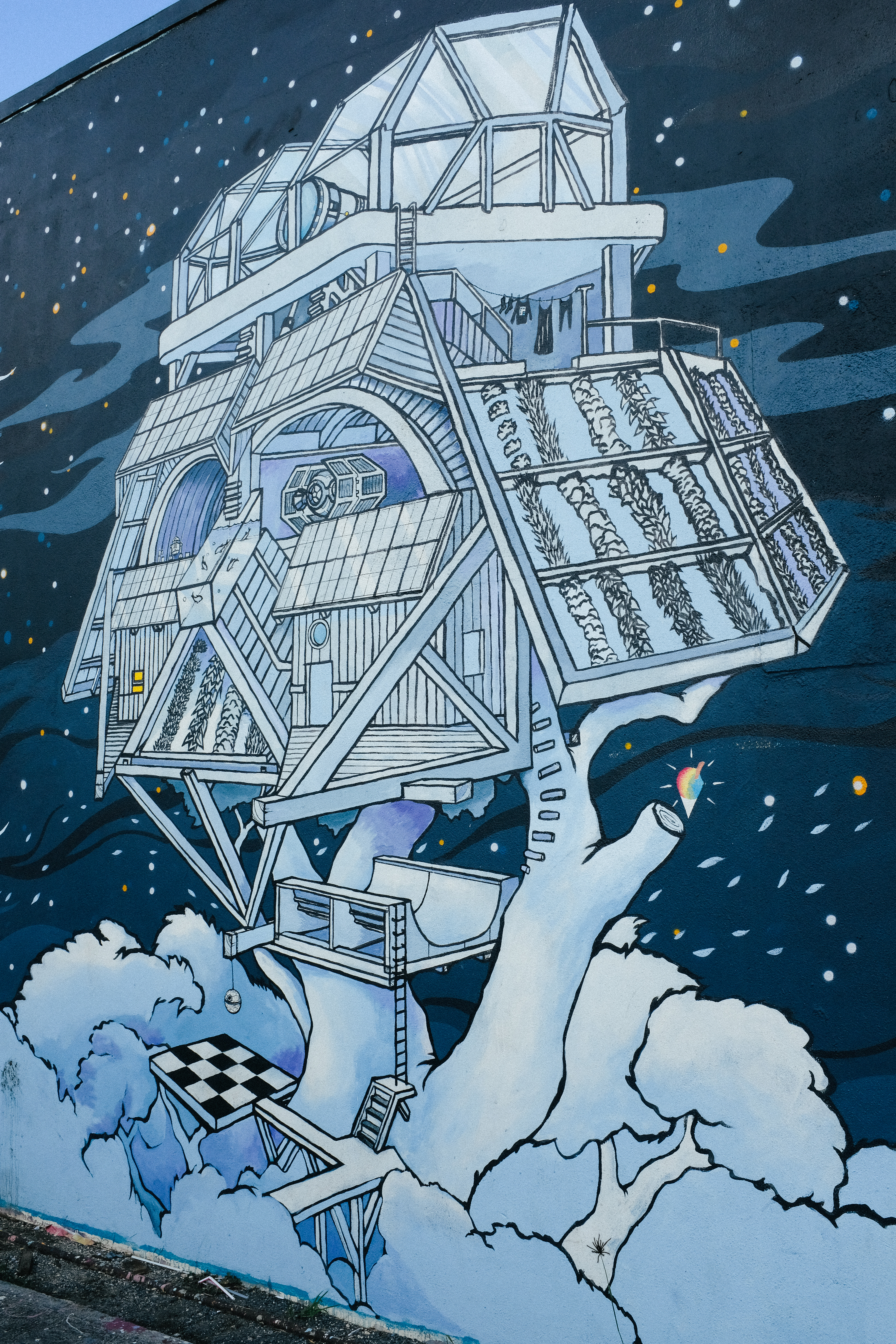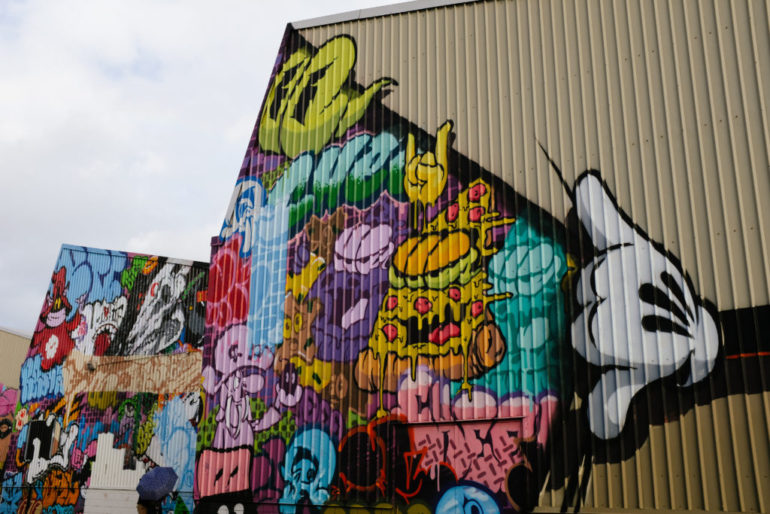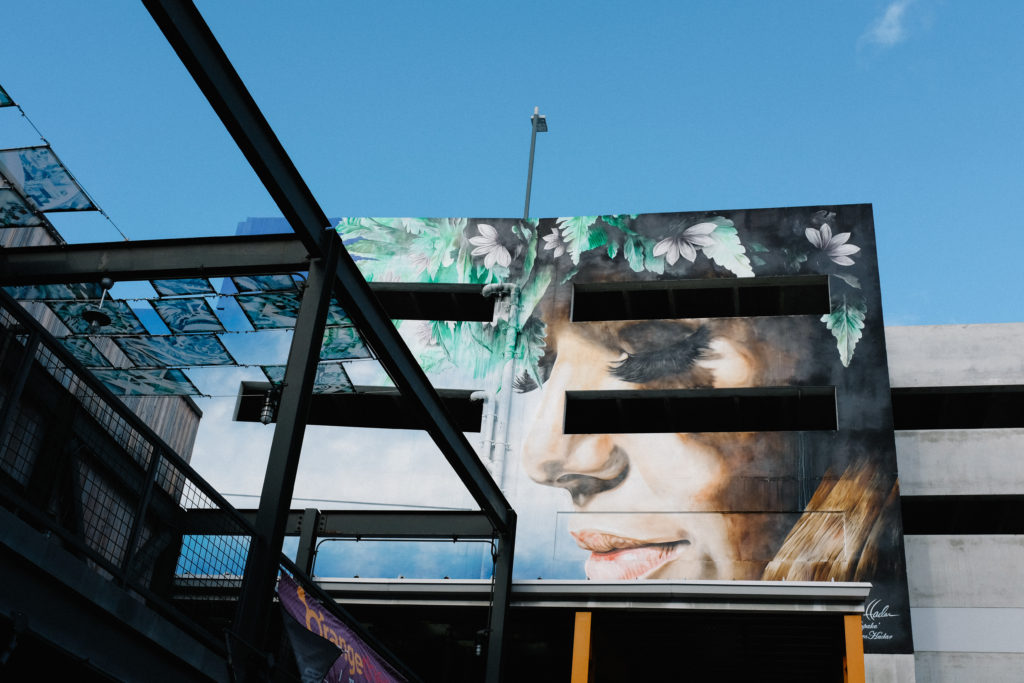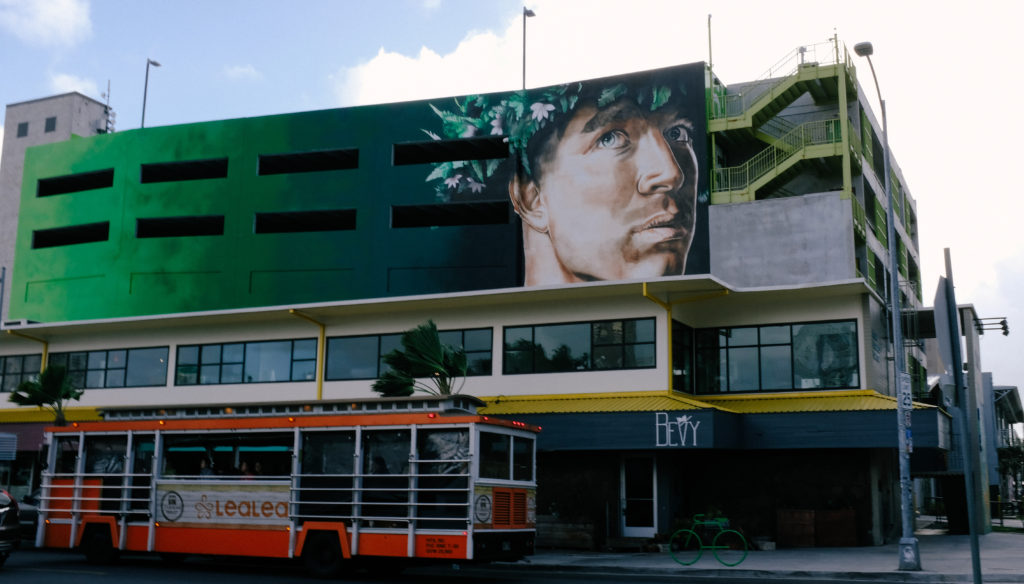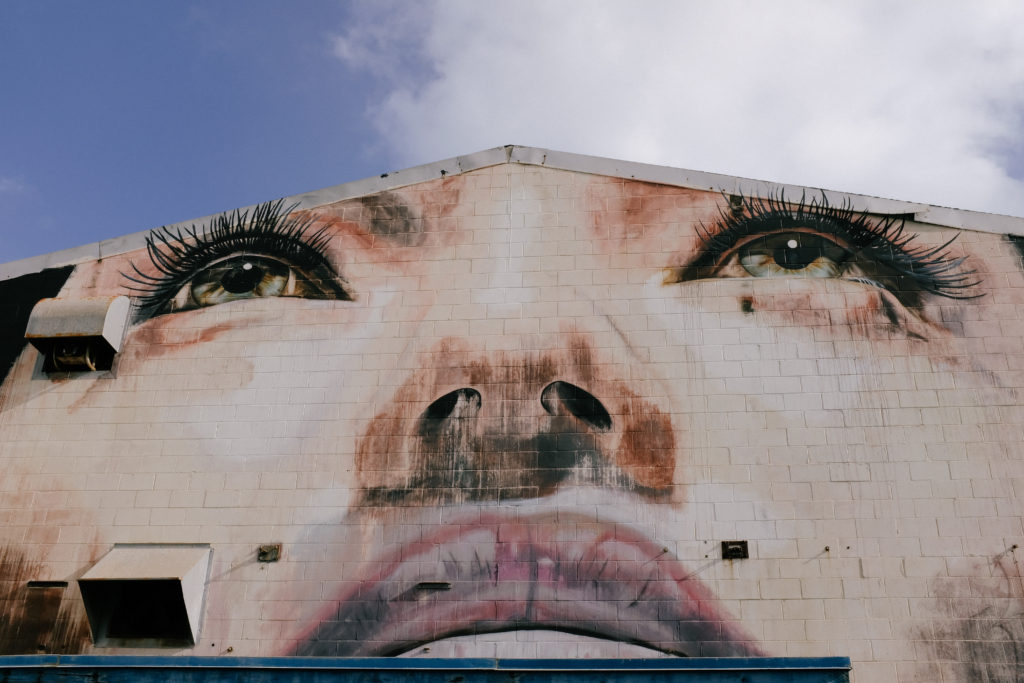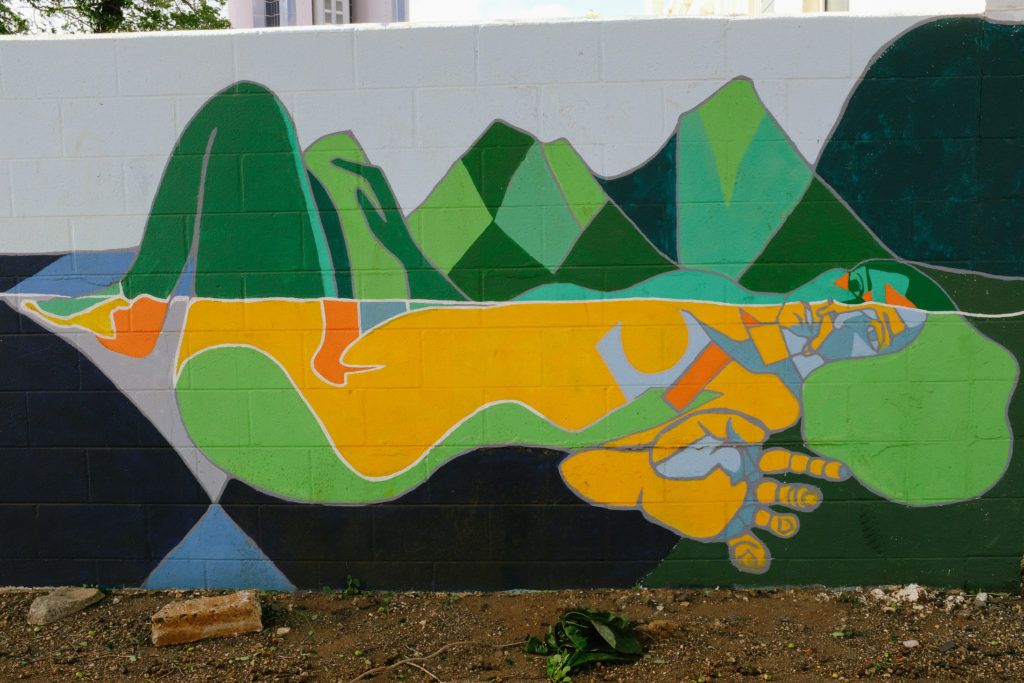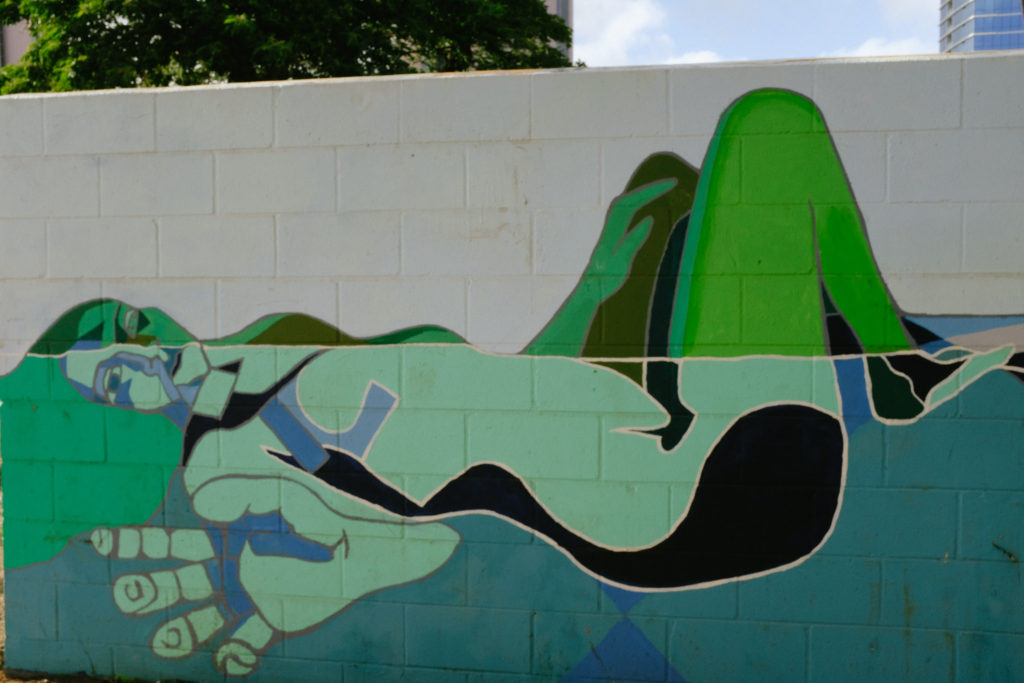It’s hard to complain about two days of travel time when it involves an overnight layover in Honolulu. Despite being extremely sleep-deprived, we knew we needed to make the most of our time on the ground—we had noon to noon to soak in Hawaii before heading back to the airport for a long flight to Australia.
For us, the best way to spend our time was to check out the local creative scene. I’d heard lots about the murals in Kaka’ako, a creative neighborhood with industrial roots, and I was excited to check them out. When we landed, we were greeted with awesome news—turns out it was the starting weekend of the POW! WOW! street art festival.
Launched by artist Jasper Wong several years ago, the festival gathers street artists from all over the world to create pieces for the local community. It takes place globally, from Taiwan to New Zealand, but Hawaii is considered its flagship spot. Checking out the festival seemed like the perfect way to kick off our journey.
On our (power) walk to Kaka’ako, we found several local businesses supporting the festival, with stickers on their storefronts, themed merchandise, and “passport” pamphlets where you could find maps for the coolest murals. It felt like we were following a trail of breadcrumbs right up to the art.
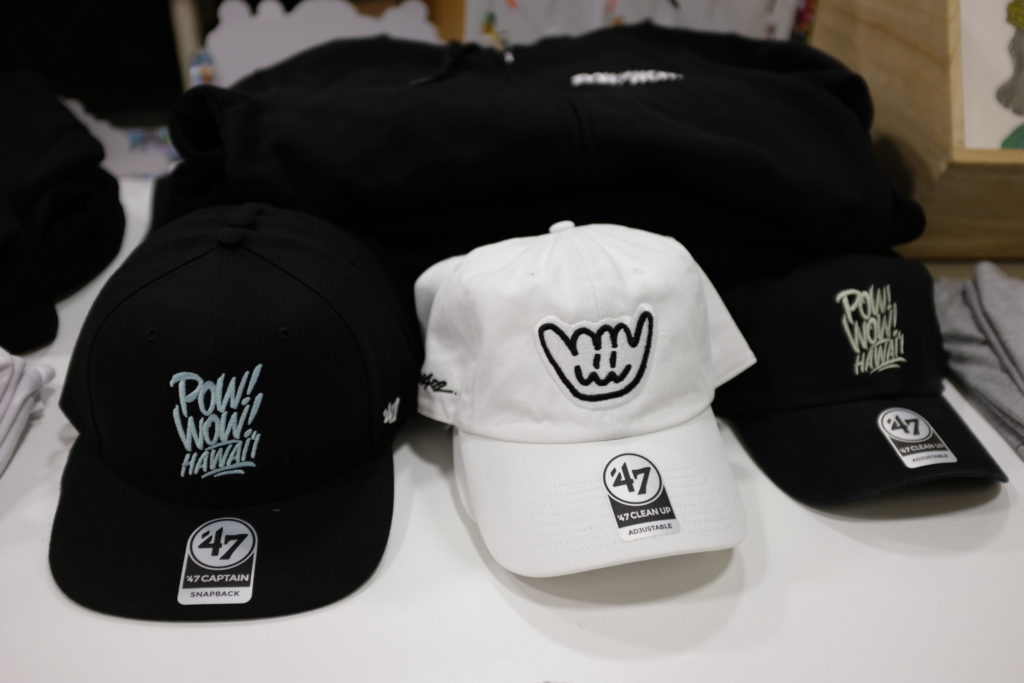
When we arrived in the neighborhood, it was refreshing to see the variety of visitors: families with young children, fellow artists, and tourists.
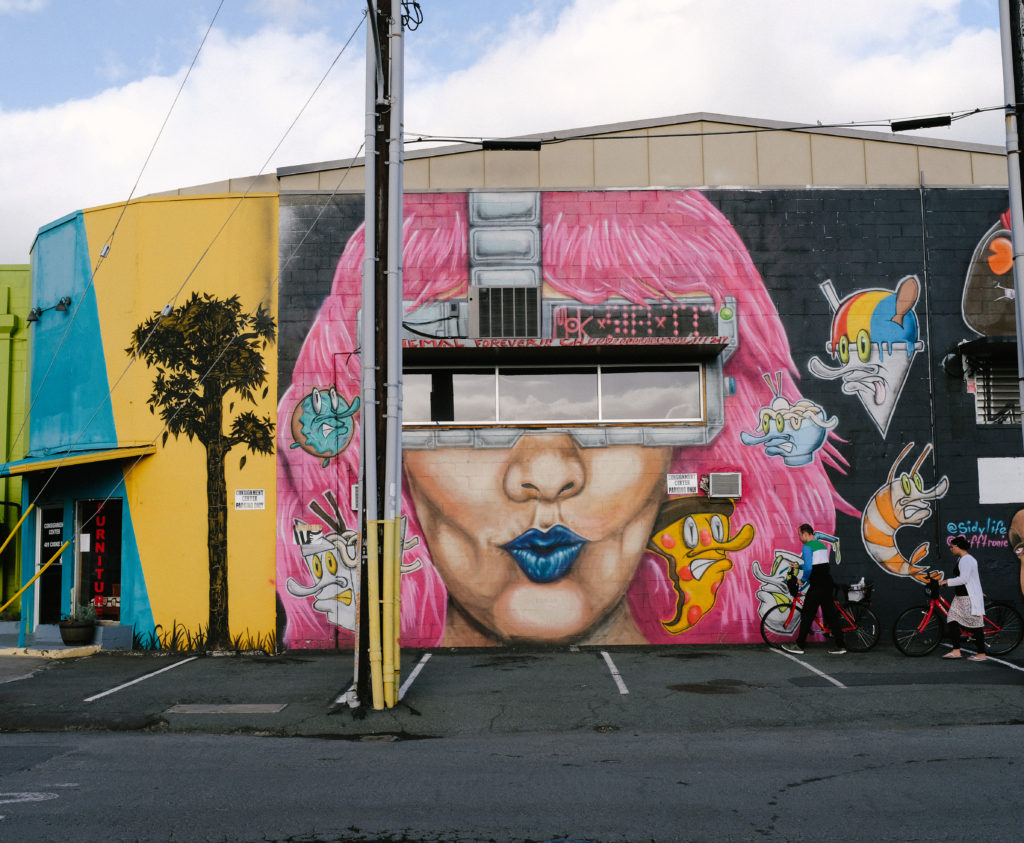
Of course, this doesn’t mean the art was universally accepted. Although the murals are legal, we saw a few flyers trying to “stop graffiti.” My personal view is that there’s a fundamental difference between graffiti (tagging) and street art (murals), but that sometimes people conflate the two. They feel that tags can sully an area and therefore associate any painted walls with crime.
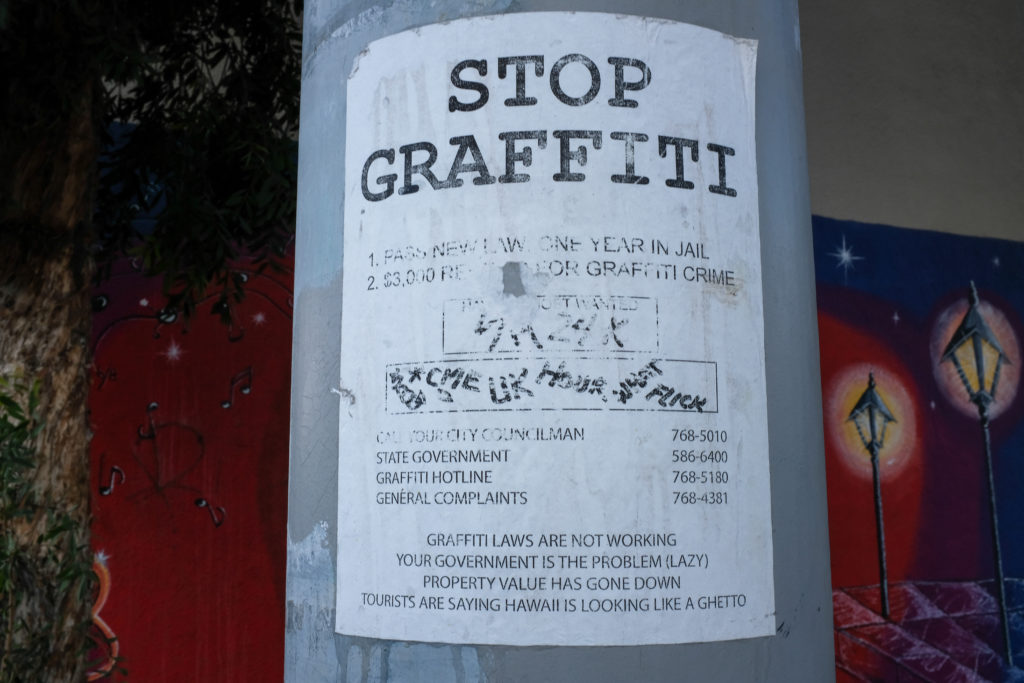
From what I’ve observed, though, street art can do something else entirely. In the context of Kaka’ako, the art seems to have attracted a lot of attention to the neighborhood. While it still has warehouses and auto mechanics, it seems to be changing quite a bit. We noticed several new, trendy stores, as well as emerging skyscrapers. Our local friends told us several buildings had been acquired by investors, which significantly raised prices in the neighborhood. This brings up an interesting trend of “graffitification,” or graffiti gentrification—when artists beautify a neighborhood, there could be a lot of unintended impact on the places and residents currently there. The conversation around street art and revitalization is a complex one, since there are many ways to look at what it means to give a place life and make it better.
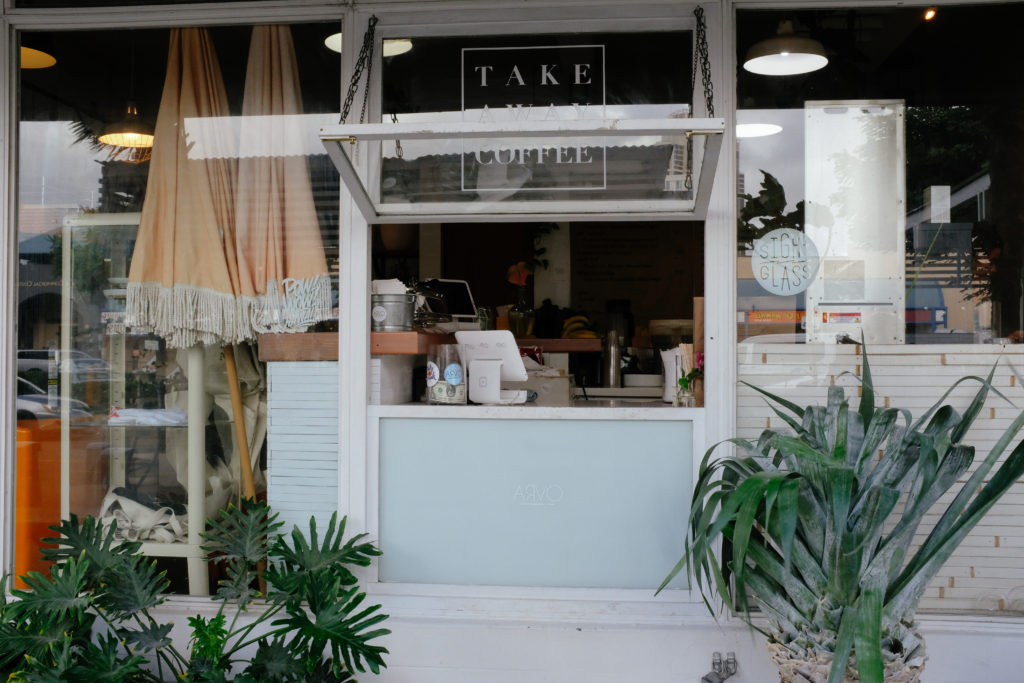
Context in mind, we were delighted to discover some amazing pieces and artists. Since we arrived in the beginning of the festival, we couldn’t see this year’s work, so these murals are from years past.
Kamea Hadar: An artist with Japanese/Korean, Israeli, and Hawaiian influence who is also co-lead director of POW! WOW! The mural captured in the last photo, a portrait of Kamea’s wife, was created in collaboration with Rone, my favorite Melbourne-based street artist.
Tran Nguyen: An artist from Vietnam. I love how the hair flows through this piece, “Fortune.”
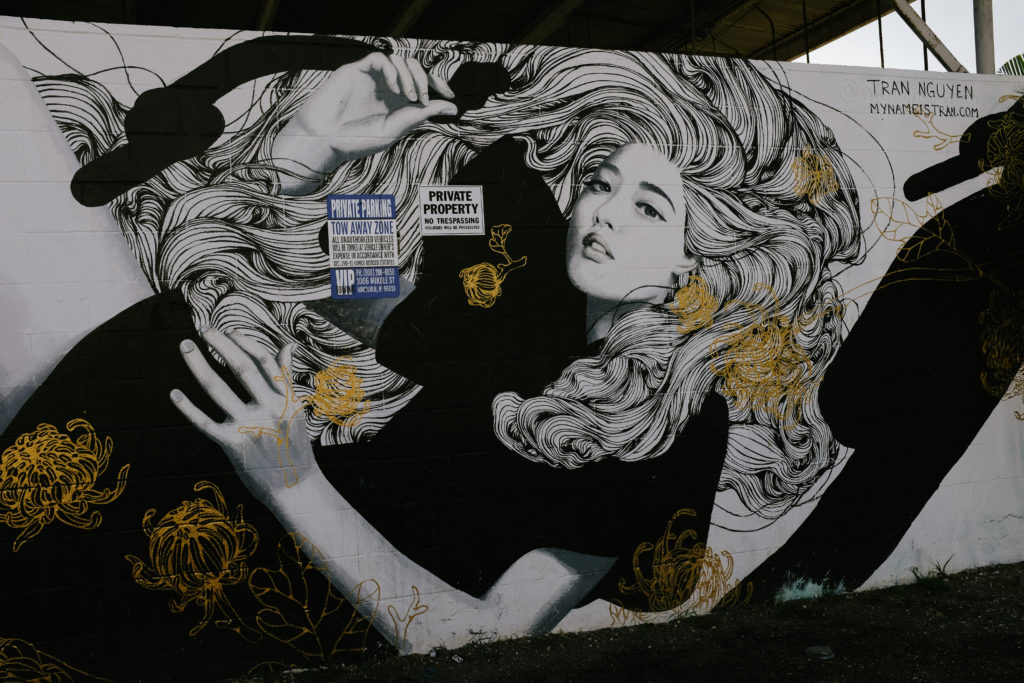
Audrey Kawasaki: A painter, currently based in Los Angeles, who is known for her erotic takes on young women. I love how she blends styles—in this piece, “Siren,” you can see a detailed, realistic face on a softly outlined body against the background of simple, geometric underwater specimen.
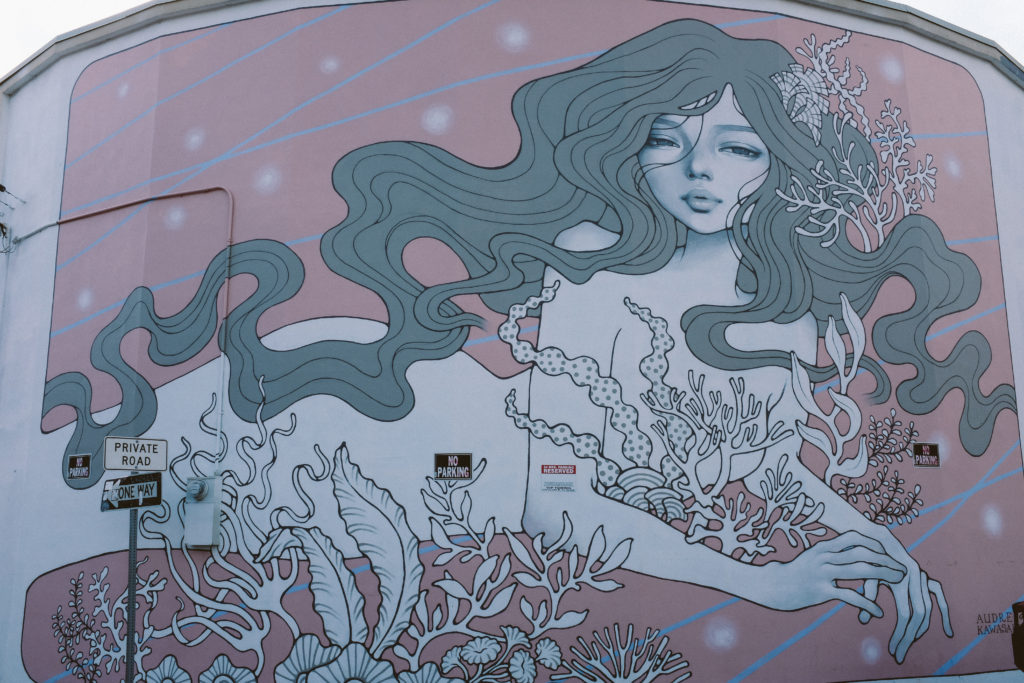
Nanea Lum: An artist who focuses on Hawaiian culture. In this mural, she depicts a Hawaiian goddess who can disguise herself in any form she pleases.
Ricky Watts and James Bullough: Ricky is known for his colorful, “squiggly” murals ,while James is known for his distorted images of people in movement, often with a feeling of release and surrender. I love this collaboration between the two artists, which wraps the woman in color.
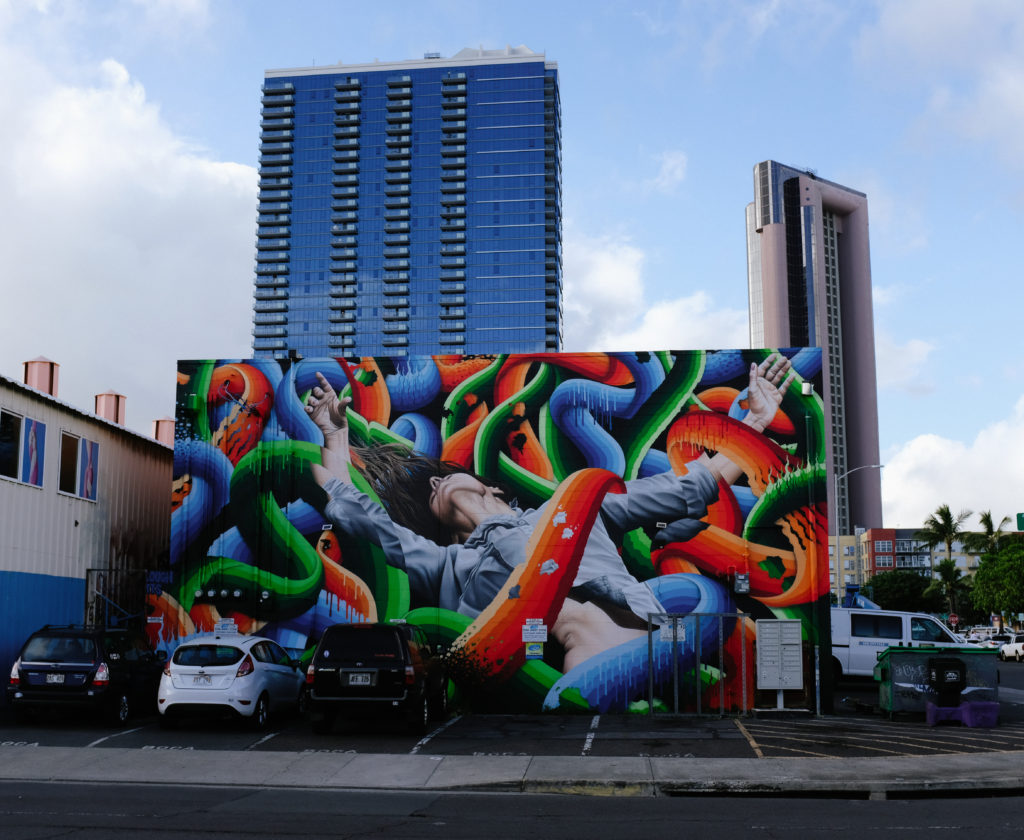
Wooden Wave: A Hawaiian couple known for their playful take on treehouses. We love the hand-drawn aesthetic, as well as the fun details. Here’s their Darth Vader treehouse.
